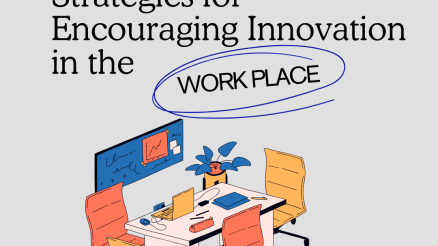In today’s fast-paced business environment, maintaining a solid reputation is crucial for the success and longevity of any company.
One such company that has faced its fair share of reputation challenges is Uber, the renowned ride-hailing service that disrupted the transportation industry.
Uber’s journey has been filled with numerous controversies and crises that have tested its resilience and threatened its reputation.
In this blog post, we will delve into the world of Uber crisis management, exploring the steps taken by the company to navigate through turbulent times and salvage its brand image.
By examining Uber’s crisis management strategies, we can extract valuable lessons that can be applied to any organization facing similar challenges in the quest to protect and restore their reputation.
Let’s dive in and learn more
Understanding Uber’s Crisis
Uber, once hailed as a trailblazer in the ride-hailing industry, found itself thrust into a series of crises that tested the company’s mettle and rocked its reputation.
The first major blow came in 2017 when a former engineer published a scathing blog post alleging a toxic work culture rampant with harassment and discrimination.
This triggered an avalanche of similar accounts from current and former employees, exposing deep-seated issues within the company.
As the storm raged on, Uber faced additional controversies, including a video of its CEO arguing with an Uber driver and reports of using software to evade law enforcement.
These incidents, coupled with intense competition and regulatory challenges, plunged Uber into a full-blown crisis, jeopardizing its standing as a trusted and reliable service.
The magnitude of the crisis demanded swift and strategic action to regain public trust and steer the company back on track.
Factors Contributing to the Crisis
- CEO Controversies: One significant factor that contributed to Uber’s crisis was a series of controversies involving its CEO. Travis Kalanick, the co-founder and former CEO of Uber, faced allegations of fostering a toxic leadership style and engaging in questionable behavior. A viral video captured Kalanick berating an Uber driver, sparking public outrage and further tarnishing the company’s image. The CEO’s confrontational attitude and questionable decisions became emblematic of Uber’s corporate culture and leadership challenges.
- Workplace Culture Issues: Uber’s crisis was also fueled by widespread reports of a toxic work culture. Multiple employees came forward with allegations of sexual harassment, discrimination, and a lack of accountability within the organization. The allegations suggested that Uber’s internal environment had fostered an atmosphere of misconduct and unprofessional behavior. The revelations painted a disturbing picture of a company where employees felt unsafe and undervalued, eroding public trust and damaging the company’s reputation.
- Legal and Regulatory Challenges: Alongside internal issues, Uber faced numerous legal and regulatory challenges worldwide. Resistance from traditional taxi industries, regulatory hurdles, and compliance issues plagued the company’s expansion efforts. Uber was met with opposition from established taxi associations and faced lawsuits, fines, and even temporary bans in some cities. These challenges highlighted the need for Uber to effectively navigate the complex regulatory landscape and build constructive relationships with local authorities.
- Competitive Pressure and Market Dynamics: The highly competitive nature of the ride-hailing industry added to Uber’s crisis. Competitors, both established taxi services and emerging ride-hailing platforms, sought to capitalize on Uber’s vulnerabilities by offering alternative services. This increased competition intensified the scrutiny on Uber and placed additional pressure on the company to address its internal issues swiftly and effectively.
Impact of the crisis on Uber’s reputation and business
The crisis that unfolded at Uber had a profound impact on both its reputation and business.
- Reputation Damage: The series of controversies and scandals severely damaged Uber’s reputation. The negative publicity surrounding workplace culture issues, harassment allegations, and questionable leadership practices eroded public trust in the company. Uber went from being seen as a disruptive innovator to a symbol of corporate misconduct and ethical shortcomings. The damaged reputation resulted in a loss of credibility and a tarnished brand image, making it difficult for Uber to regain public trust.
- Decline in Customer Confidence: The crisis had a direct impact on customer confidence in Uber’s services. Reports of safety concerns, driver misconduct, and a toxic work environment led many customers to question the reliability and trustworthiness of the platform. This decline in confidence translated into a loss of customers as they turned to alternative ride-hailing services or reverted to traditional transportation options. As a result, Uber experienced a decline in market share and faced challenges in retaining its customer base.
- Legal and Regulatory Challenges: The crisis also brought heightened scrutiny from regulatory authorities and legal challenges. Uber faced investigations, lawsuits, and fines from various jurisdictions, further damaging its reputation and draining financial resources. The legal battles and regulatory hurdles not only disrupted Uber’s operations but also created uncertainties around the company’s compliance with laws and regulations, making it difficult to navigate in a complex and evolving regulatory landscape.
- Financial Impact: The crisis had significant financial implications for Uber. The negative publicity and reputational damage led to a decrease in user demand and slowed revenue growth. Uber had to invest resources in crisis management, legal defense, and implementing necessary reforms, impacting its profitability and financial stability. Additionally, the damaged reputation made it more challenging for Uber to attract new investors and secure partnerships, affecting its ability to raise funds for expansion and innovation.
- Competitive Disadvantage: The crisis provided an opportunity for Uber’s competitors to gain an advantage. Rival ride-hailing services capitalized on Uber’s troubles by highlighting their own commitment to safety, ethical practices, and a positive work environment. This increased competition further intensified the challenges faced by Uber and posed a threat to its market dominance.
Steps Taken by Uber in Crisis Management
In response to the crisis, following are the key steps taken by Uber to manage that crisis.
1. Acknowledging the crisis
Uber took the crucial step of recognizing the seriousness and extent of the crisis it was facing. This involved acknowledging the impact of the controversies, workplace culture issues, and leadership shortcomings on the company’s reputation, customer trust, and overall business operations. By understanding the gravity of the situation, Uber was able to develop a clear understanding of the challenges it needed to address.
Uber publicly acknowledged the problems and shortcomings that had led to the crisis. Through official statements, press releases, and public appearances, the company openly admitted the existence of workplace culture issues, harassment incidents, and flaws in its leadership practices. This acknowledgment demonstrated a willingness to take responsibility for the mistakes and deficiencies within the organization, signaling a commitment to transparency and a desire to rectify the situation.
By acknowledging the crisis and publicly admitting the issues and shortcomings, Uber set the foundation for a more proactive approach to crisis management. This step was vital in building trust and credibility with stakeholders, as it demonstrated a willingness to confront the problems head-on and take necessary actions to address them.
2. Leadership changes and reforms
CEO resignation and appointment of new leadership: In response to the crisis, Uber underwent a significant leadership change. Travis Kalanick, the co-founder and former CEO, resigned from his position. This decision was made to bring about a fresh start and to address the concerns surrounding his leadership style and behavior.
Uber appointed Dara Khosrowshahi as the new CEO, bringing in a leader known for his emphasis on transparency and ethical practices. The change in leadership was aimed at instilling a new culture and vision within the company.
Uber recognized the need for fundamental changes in its culture and policies to address the issues that had contributed to the crisis. The company initiated comprehensive reforms to foster a more inclusive, respectful, and accountable work environment.
This involved implementing training programs to raise awareness about harassment and discrimination, strengthening the reporting and investigation mechanisms for employee complaints, and revising policies to ensure compliance with ethical and legal standards. The focus was on cultivating a culture that prioritized safety, diversity, and employee well-being.
3. Communication and transparency
Uber recognized the importance of open and honest communication with its stakeholders, including employees, customers, investors, and regulatory authorities. The company engaged in proactive communication to keep stakeholders informed about the steps being taken to address the crisis and improve the situation. This included regular updates, town hall meetings, and direct communication channels to address concerns, answer questions, and provide reassurance.
Uber prioritized transparency in addressing the crisis and its aftermath. The company made efforts to provide transparent information about the actions being taken to address the issues that led to the crisis. This involved sharing progress reports, disclosing findings from internal investigations, and being transparent about the changes being implemented. Uber also committed to sharing regular updates on the progress made in terms of cultural reforms, policy changes, and safety enhancements.
4. Implementing corrective measures
Uber took steps to enhance safety measures and ensure a more secure experience for both riders and drivers. This involved implementing stricter background checks and screening processes for potential drivers, including verifying driver identities and conducting thorough criminal background checks. The company also invested in technology to improve safety, such as in-app emergency assistance features and real-time trip monitoring. These measures aimed to enhance passenger safety and build trust in Uber’s commitment to providing a secure platform.
To address the workplace culture issues and allegations of harassment, Uber undertook efforts to foster a more inclusive and respectful work environment. The company implemented comprehensive anti-harassment policies and training programs to educate employees on appropriate behavior and reporting mechanisms. Additionally, Uber established dedicated channels for employees to report misconduct, ensuring confidentiality and a fair investigation process. By taking these steps, Uber aimed to create a culture that values and promotes diversity, respect, and professionalism.
5. Engaging with external experts and stakeholders
Uber recognized the importance of engaging with regulatory authorities and industry experts to address the crisis and improve its operations. The company actively collaborated with regulatory bodies to ensure compliance with local laws and regulations. Uber sought guidance and input from industry experts to enhance safety protocols, improve driver screening processes, and develop best practices.
By working closely with external entities, Uber aimed to demonstrate its commitment to responsible business practices and to leverage external expertise in implementing effective solutions.
Uber actively sought feedback from its stakeholders, including customers, drivers, employees, and the general public. The company encouraged open dialogue through surveys, feedback mechanisms within the app, and public forums. Uber listened to the concerns, suggestions, and criticisms voiced by stakeholders and used that feedback to drive improvements. Incorporating the suggestions and ideas of external stakeholders allowed Uber to better understand their needs and expectations, resulting in more customer-centric policies and operational changes.
Lessons Learned from Uber’s Crisis Management
Following are some key lessons learned from Uber Crisis Management:
Importance of proactive crisis management
Uber’s crisis highlighted the significance of taking a proactive approach to crisis management. It is crucial for organizations to identify and address issues before they escalate into full-blown crises. By recognizing the gravity of the situation early on and being proactive in acknowledging the issues and shortcomings, organizations can demonstrate a commitment to transparency and swift action. Proactive crisis management allows organizations to regain control, address concerns, and implement necessary changes before irreparable damage occurs.
Value of cultural reform and workplace environment
The crisis at Uber underscored the importance of a healthy work culture and a respectful workplace environment. Organizations should prioritize fostering a culture of inclusivity, respect, and accountability. By implementing policies and training programs that promote diversity, prevent harassment, and encourage open communication, organizations can create an environment where employees feel safe, valued, and motivated. Investing in a positive workplace culture not only prevents crises but also contributes to long-term success and employee satisfaction.
Value of transparent communication and swift action
Uber’s crisis highlighted the importance of transparent communication during times of crisis. Openly acknowledging the issues and shortcomings, sharing updates on the actions being taken, and addressing concerns directly with stakeholders builds trust and credibility. Transparent communication helps to mitigate rumors, speculation, and misinformation, and demonstrates a commitment to being accountable and proactive in resolving the crisis. It allows organizations to maintain better control over the narrative and shape public perception.
Swift action and decisive decision-making
Uber’s crisis emphasized the significance of swift action and decisive decision-making. When facing a crisis, organizations need to act promptly to address the issues and implement necessary changes. Delaying action or being indecisive can further escalate the crisis and erode trust. Making difficult decisions, such as leadership changes or policy reforms, quickly and effectively can demonstrate a commitment to resolving the crisis and rebuilding the organization’s reputation. Swift action also helps to regain control of the situation and minimize the impact on the business.
How reputation impacts customer trust and loyalty
Reputation plays a crucial role in shaping customer trust and loyalty. A positive reputation can instill confidence in customers and strengthen their trust in a brand, while a negative reputation can erode trust and drive customers away. Here are some key ways in which reputation impacts customer trust and loyalty:
Reputation influences customers’ perception of risk associated with a brand. A strong reputation mitigates the perceived risks of making a purchase or engaging with a brand. Customers feel more comfortable and confident in their decision when they perceive a brand as trustworthy and reputable, reducing their hesitation and increasing their loyalty.
Final words
Uber’s crisis serves as a reminder that proactive crisis management, cultural reform, transparent communication, and reputation management are essential components for organizations to navigate challenges, rebuild trust, and emerge stronger. By learning from Uber’s experience, organizations can develop robust crisis management strategies, foster positive work cultures, and prioritize customer trust and loyalty, positioning themselves for resilience and sustainable growth in today’s dynamic business landscape.



